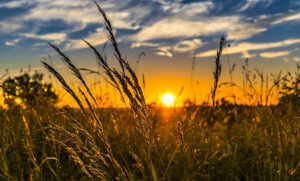On 20 February 1962, NASA astronaut John Glenn became the first American to orbit the Earth.
During both missions, Perth residents created a brilliant light show in support. Glenn, who died in 2016 at the age of 95, took note of the dazzling display as he flew over WA.

Perth had earned itself the nickname City of Light and it stuck. Since then, city buildings have been illuminated in a nod to the honour. The City of Perth even launched a new brand and logo to coincide with the 60th anniversary of the famed event.
Embracing our dark side
WA’s landscape has changed dramatically since the 1960s.
Our state is at the world forefront in the field of astronomy, and dark sky tourism is becoming increasingly popular. Even State Daddy, Premier Mark McGowan, has vowed to protect our dark night skies.
Carol Redford is the CEO and Founder of Astrotourism WA and International Dark Sky Association delegate. (She’s known as Galaxy Girl in astronomy circles.)

Carol says Perth and WA are in a unique position to become the stargazing and astronomy capital of the world.
“Our dark night skies are a hidden jewel of our environment,” says Carol.
She says what sets us apart is our vast, open landscape connected by small country towns with low light pollution.
“Perth is a fantastic city but we’re not like Sydney, Paris or New York, where there’s these really stunning iconic structures like the Sydney Opera House or Eiffel Tower,” says Carol.
“Even when people are travelling to a dark sky area, they may be unaware of the hundreds of billions of stars above them, and the Milky Way in its full, beautiful glory stretching from horizon to horizon.”
“By the year 2030, I think Western Australia will become the place you go to see the Milky Way.”

Perth: City of Starlight?
Carol says the WA Government’s Dark sky and astrotourism position statement released last month is vital for protecting our special dark night skies.
“We’ve had the tag the City of Light for so long.”
“I think we’re in this transition time where Perth can go from the City of Light to the ‘City of Starlight’.”
By embracing our ‘dark side’, Perth and WA could gain big economic and environmental benefits.
Light: it’s darker than you think
It’s not just scientists and stargazing tourists who could see the benefits (so to speak) from our dark night skies.
Light pollution disrupts wildlife ecosystems and migration patterns. It can throw our natural sleep cycle out of whack, while increasing the risks of obesity, depression, diabetes and other health issues.
Blue light can ruin our view of the night sky, but we could reduce its impact by using LED bulbs in streetlights.
“We have this opportunity because we’re changing to this new lighting technology,” says Carol.
“So why not spend the right money now? It means we can get the right lighting in place right now rather than in 10 years’ time,” she adds.
“[Our night sky] is an amazing asset for Western Australia to hang on to.”











